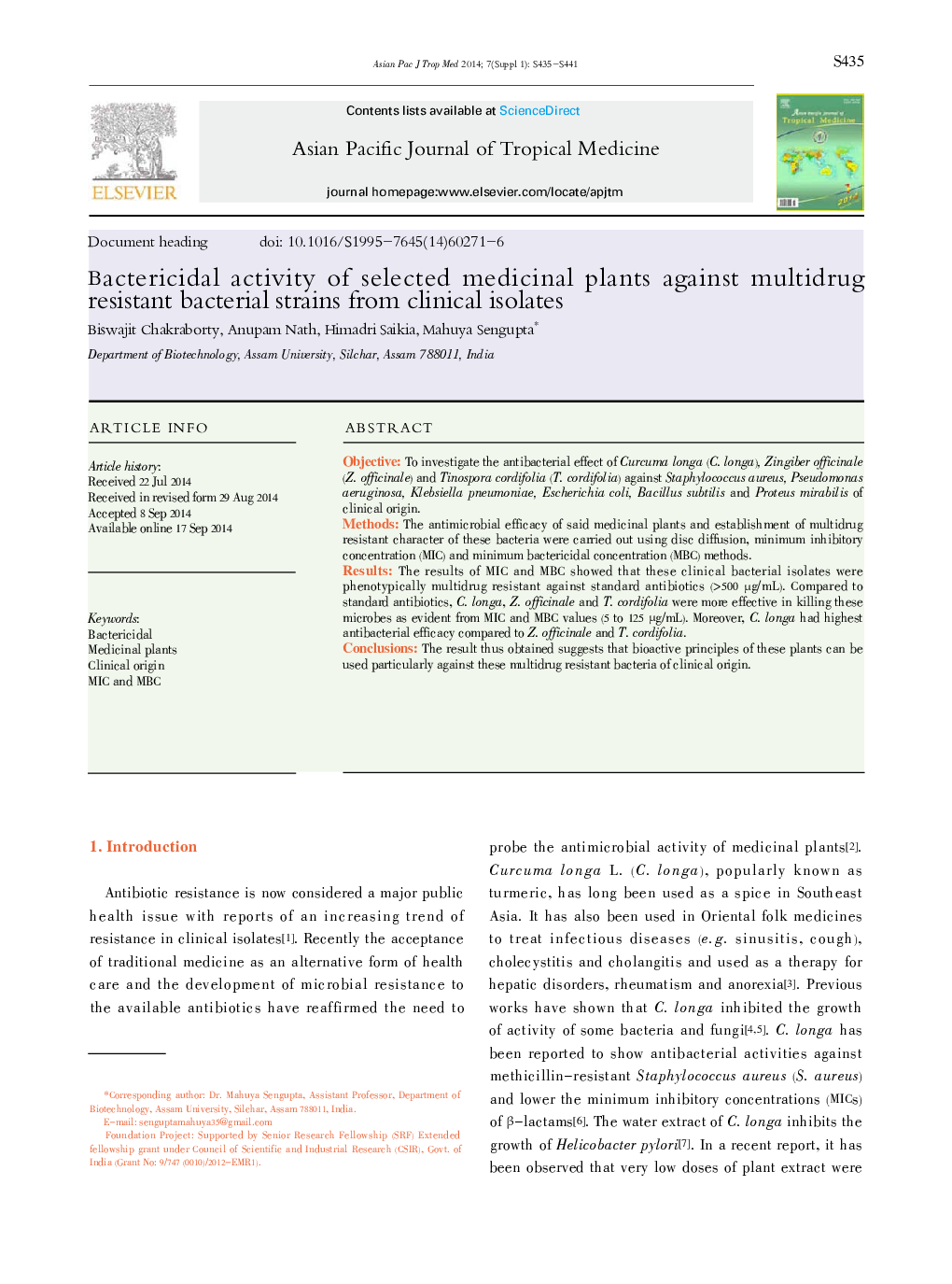| Article ID | Journal | Published Year | Pages | File Type |
|---|---|---|---|---|
| 3455971 | Asian Pacific Journal of Tropical Medicine | 2014 | 7 Pages |
ObjectiveTo investigate the antibacterial effect of Curcuma longa (C. longa), Zingiber officinale (Z. officinale) and Tinospora cordifolia (T. cordifolia) against Staphylococcus aureus, Pseudomonas aeruginosa, Klebsiella pneumoniae, Escherichia coli, Bacillus subtilis and Proteus mirabilis of clinical origin.MethodsThe antimicrobial efficacy of said medicinal plants and establishment of multidrug resistant character of these bacteria were carried out using disc diffusion, minimum inhibitory concentration (MIC) and minimum bactericidal concentration (MBC) methods.ResultsThe results of MIC and MBC showed that these clinical bacterial isolates were phenotypically multidrug resistant against standard antibiotics (>500 μg/mL). Compared to standard antibiotics, C. longa, Z. officinale and T. cordifolia were more effective in killing these microbes as evident from MIC and MBC values (5 to 125 μg/mL). Moreover, C. longa had highest antibacterial efficacy compared to Z. officinale and T. cordifolia.ConclusionsThe result thus obtained suggests that bioactive principles of these plants can be used particularly against these multidrug resistant bacteria of clinical origin.
